Japanese Garden in Almelo - Landscaping (2018)

From Small Influences to a Fully Authentic Japanese Garden
A client in Almelo, the Netherlands, already had a garden with small Japanese influences and was
contemplating upgrading it to a more authentic Japanese design. Therefore, he entrusted Yokoso
Japanese Gardens to fulfill his desire. The new design incorporated a Japanese shelter, known as
a Koshikake in Japanese. Typically found in Japanese tea gardens, it serves as a covered bench
where visitors sit before entering and after leaving the tea room. However, the client desired
a larger version of the Koshikake with a comfortable seat to enjoy the garden. The Koshikake is
constructed using Western Red Cedar wood combined with Siberian larch wood, and its roof is
adorned with traditional Japanese ceramic roof tiles.
The restyling also required the redesign of certain parts of the existing garden. For instance, a
stepping stone path, called Tobi-ishi in Japanese, was created to connect the terrace and the
Koshikake, using a granite bridge. A rock formation was strategically placed in the traditional
San-zon-seki arrangement, accompanied by solitary rocks scattered throughout. To infuse more
dynamism into the garden, a row of tiles was removed from the existing stone terrace, creating a
corner. In this resulting space, a ‘Kutsunugi-ishi’ was positioned, serving as the bridge between
the terrace and the stepping stone path. The gravel areas are separated from the terrace by a
Sokkou (側溝) or gutter, consisting of a double row of granite curb stones with black pebbles
in between. Apart from its aesthetical effect, this Sokkou also aids drainage, preventing excess
water buildup on the terrace during heavy rains.
Two Japanese lanterns were also added. In the back of the garden, there is a beautiful Yukimi Gata
on the left, also known as a Japanese snow lantern. To the right of the Koshikake, a Tsukubai setup
has been created, behind which an Oribe lantern is placed. The planting has been enriched with
Japanese Azalea bulbs, Taxus bulbs, Leptinella, Ophiopogon, and various other accent plants to
enhance the overall aesthetic.


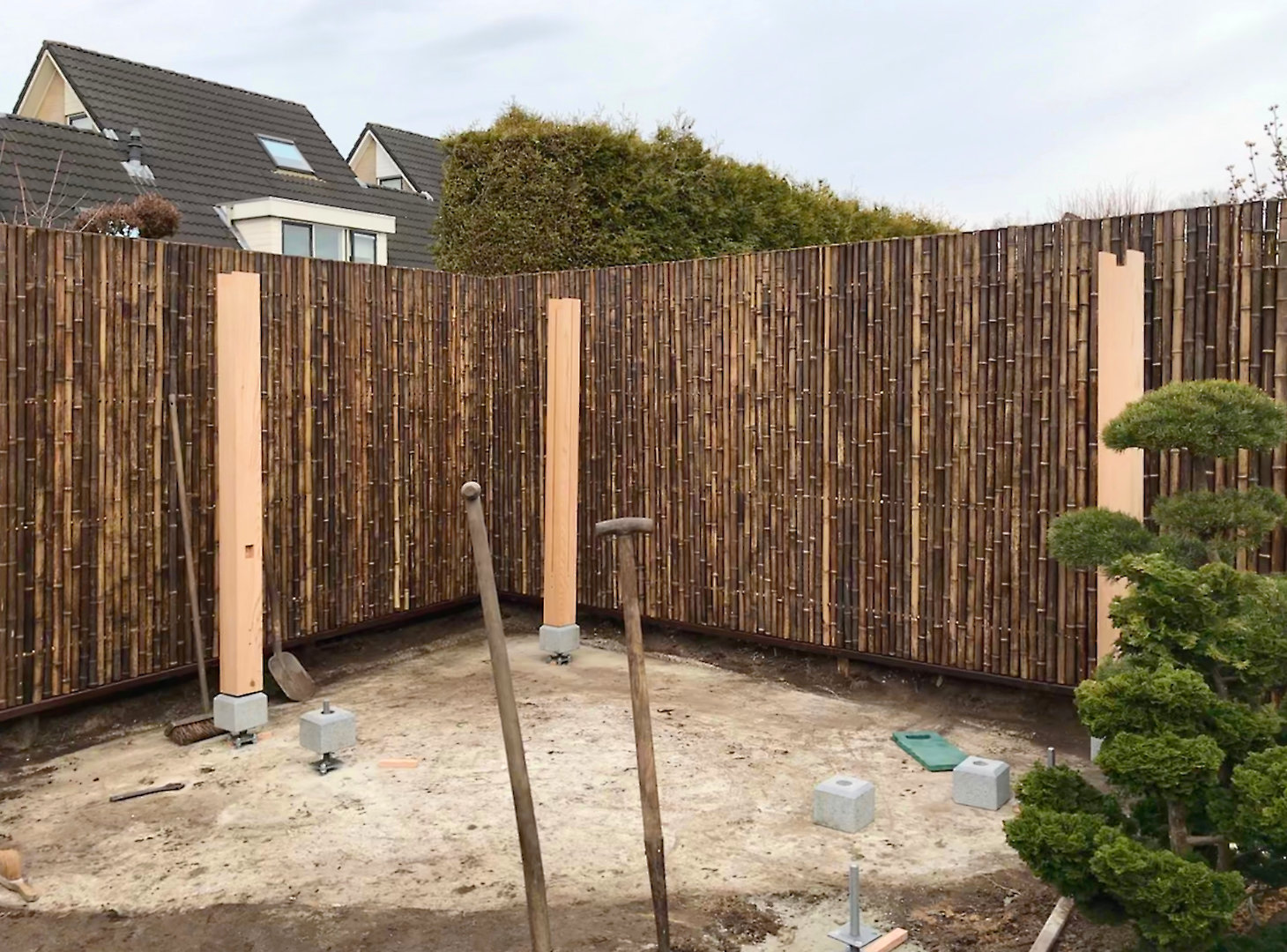
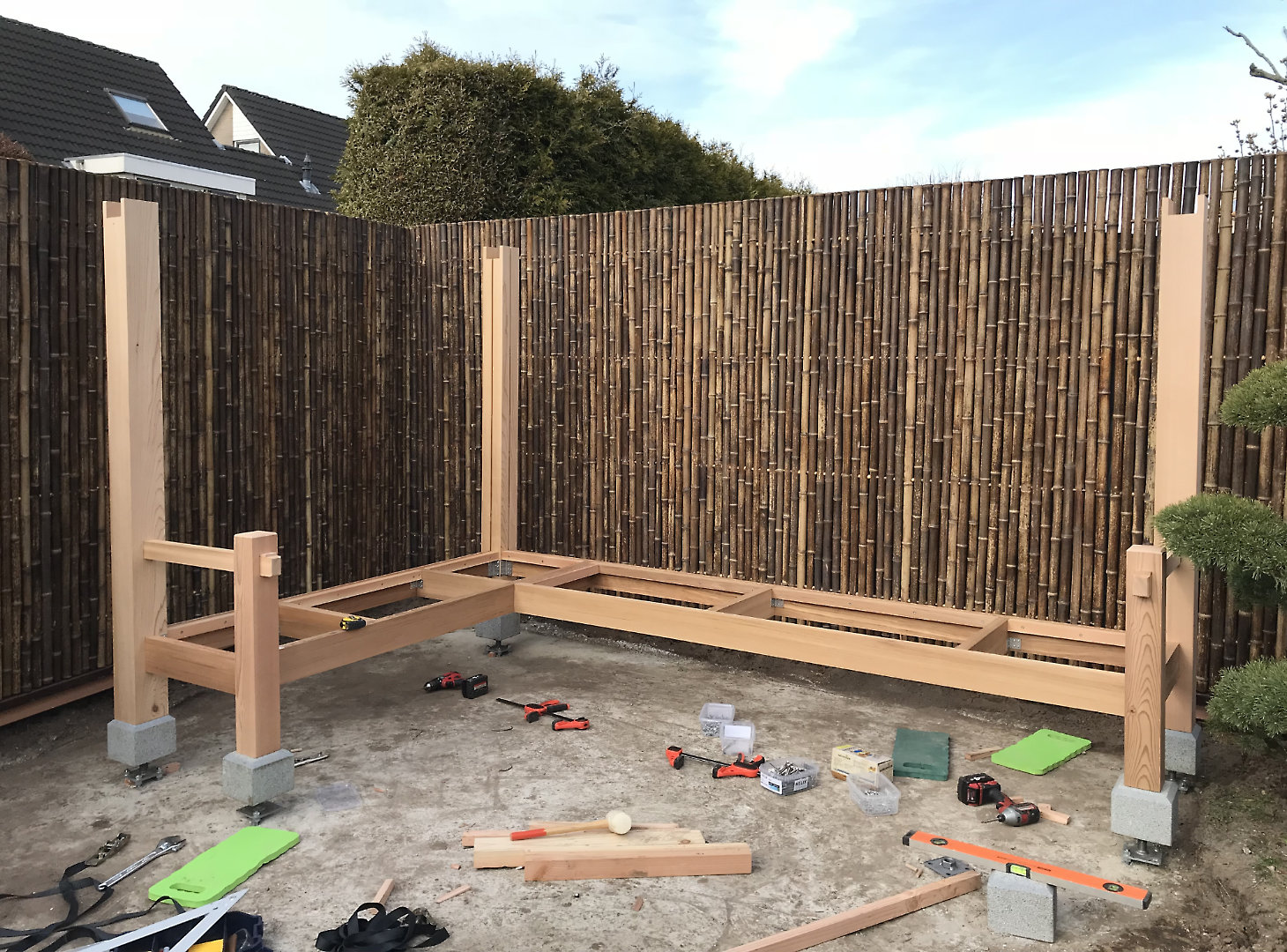
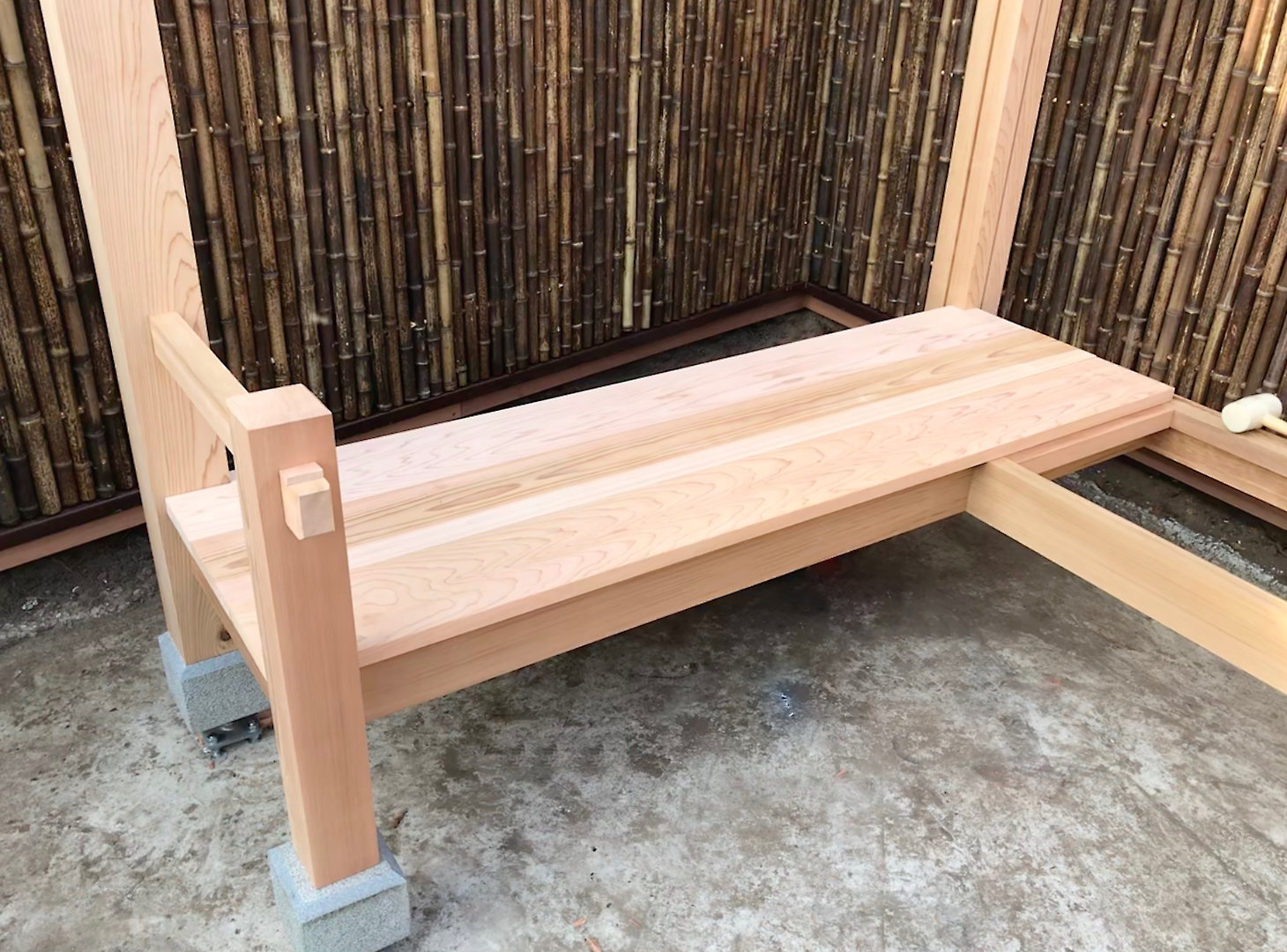
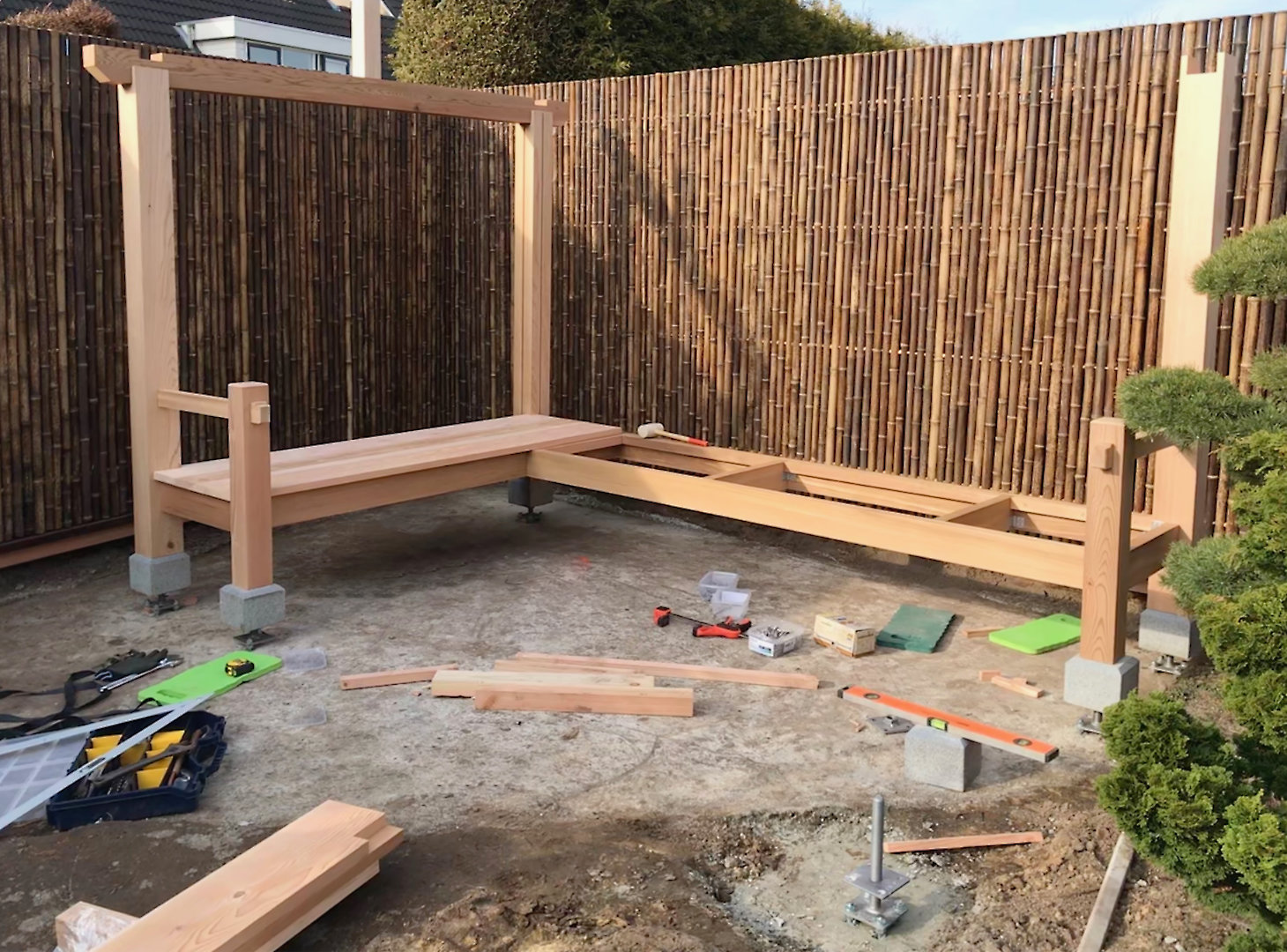
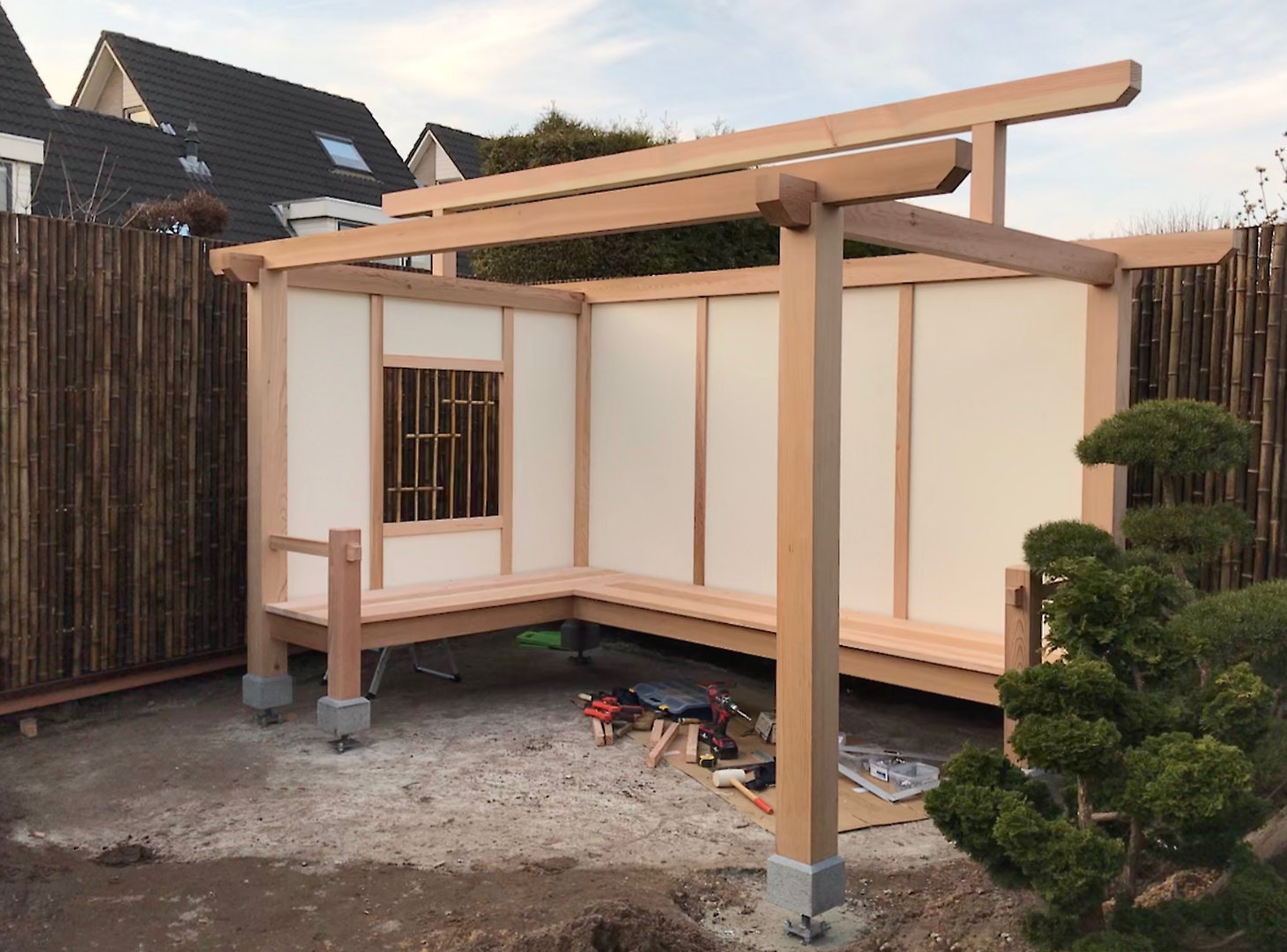
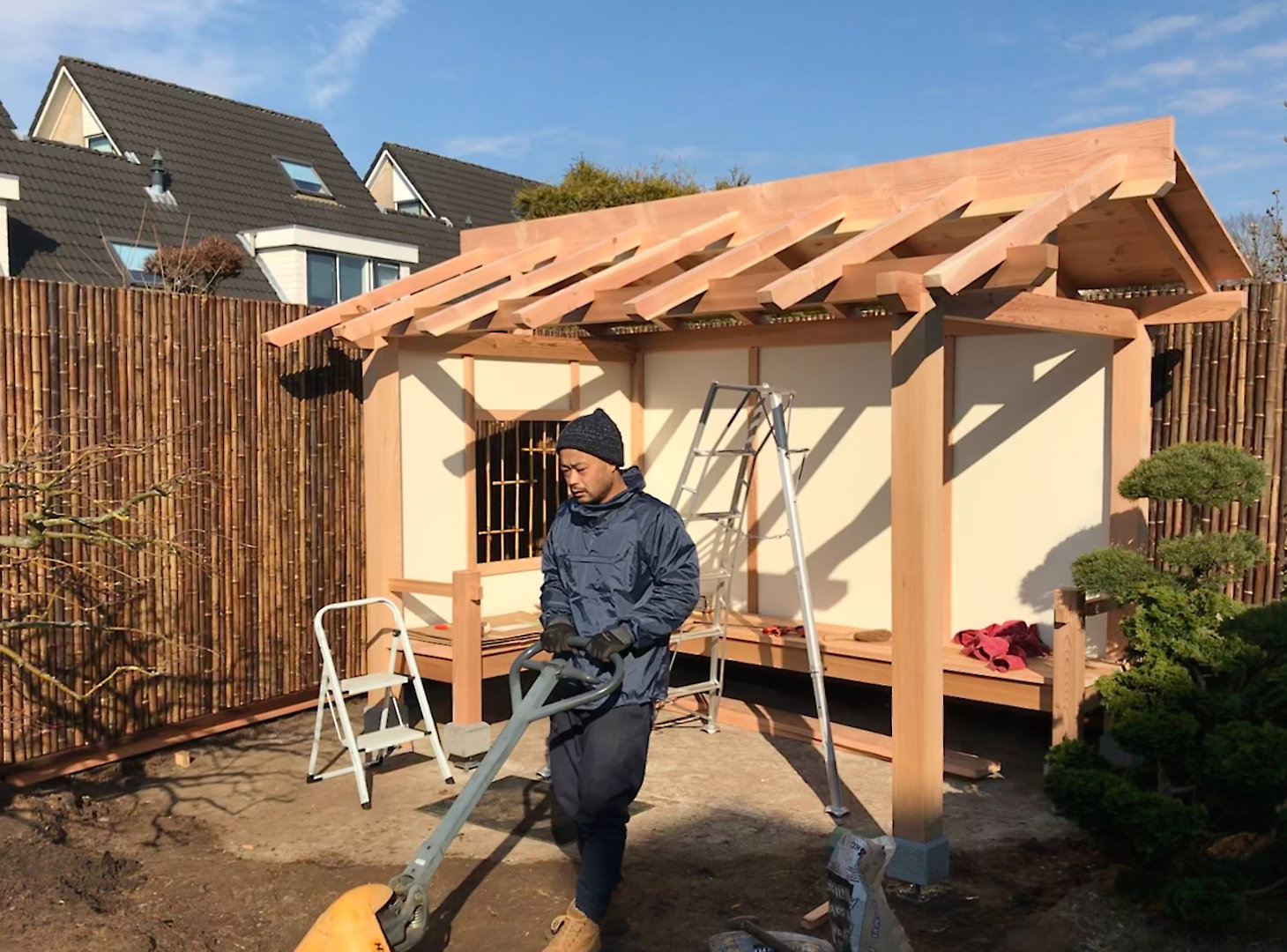
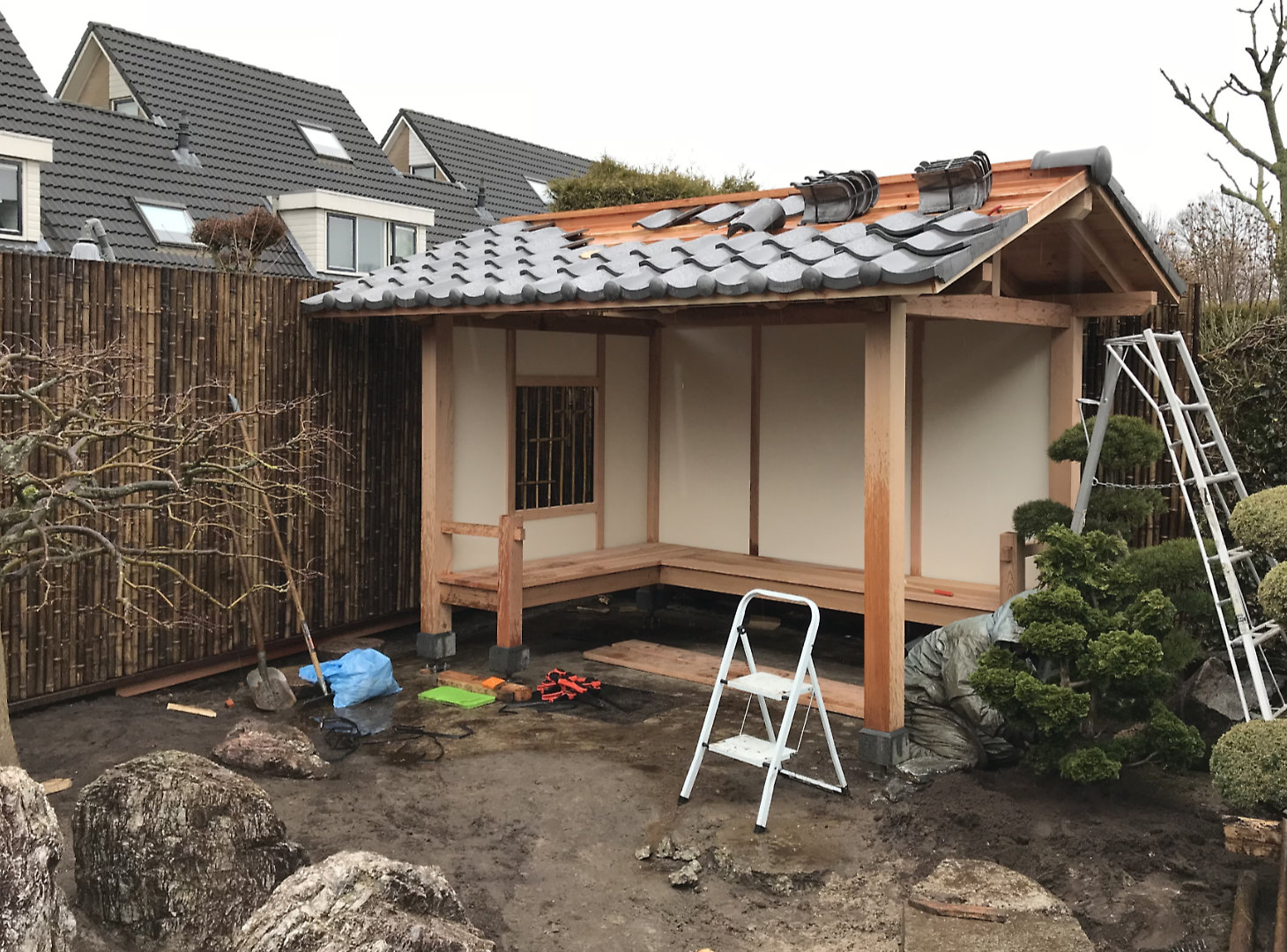
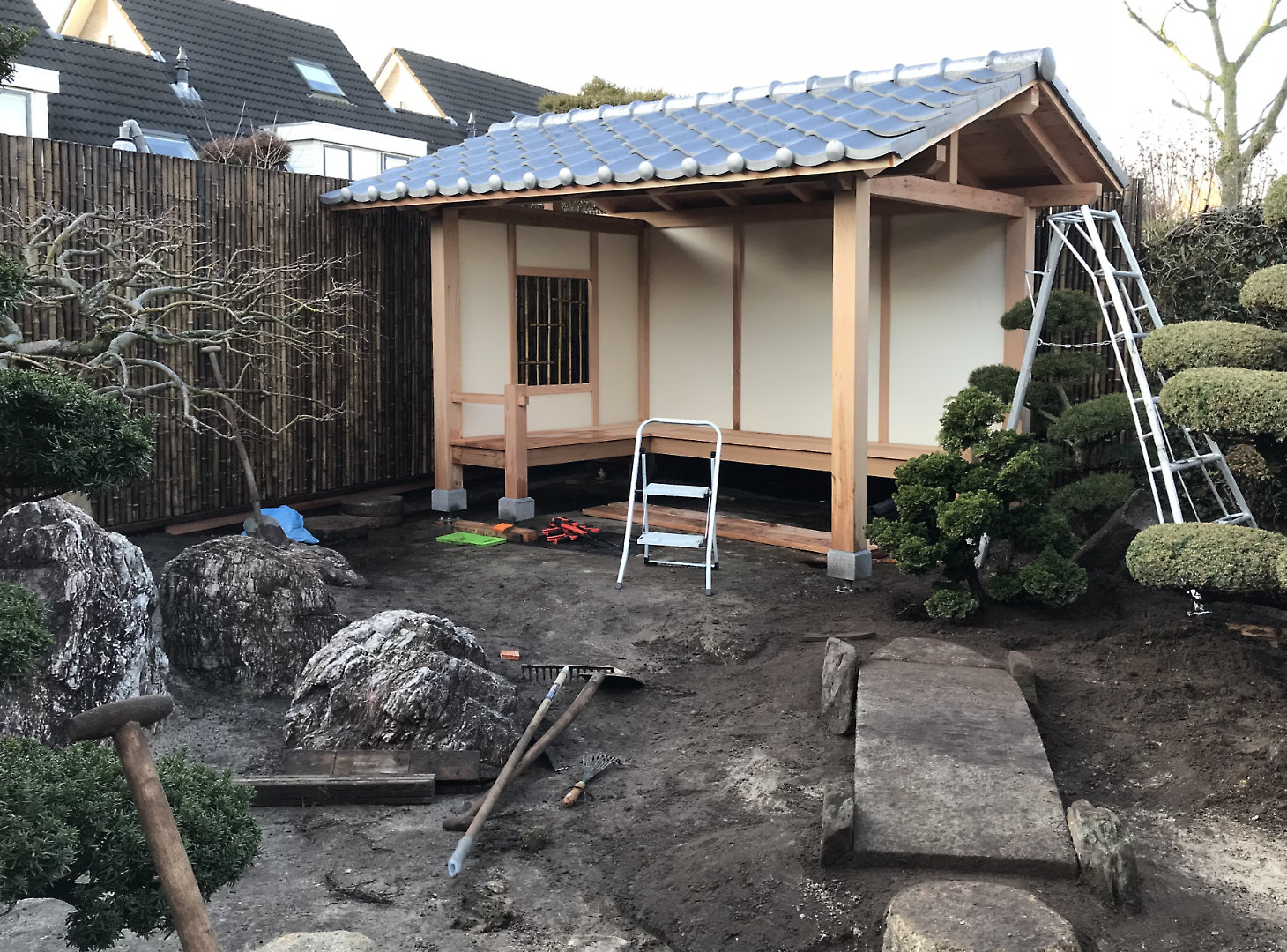
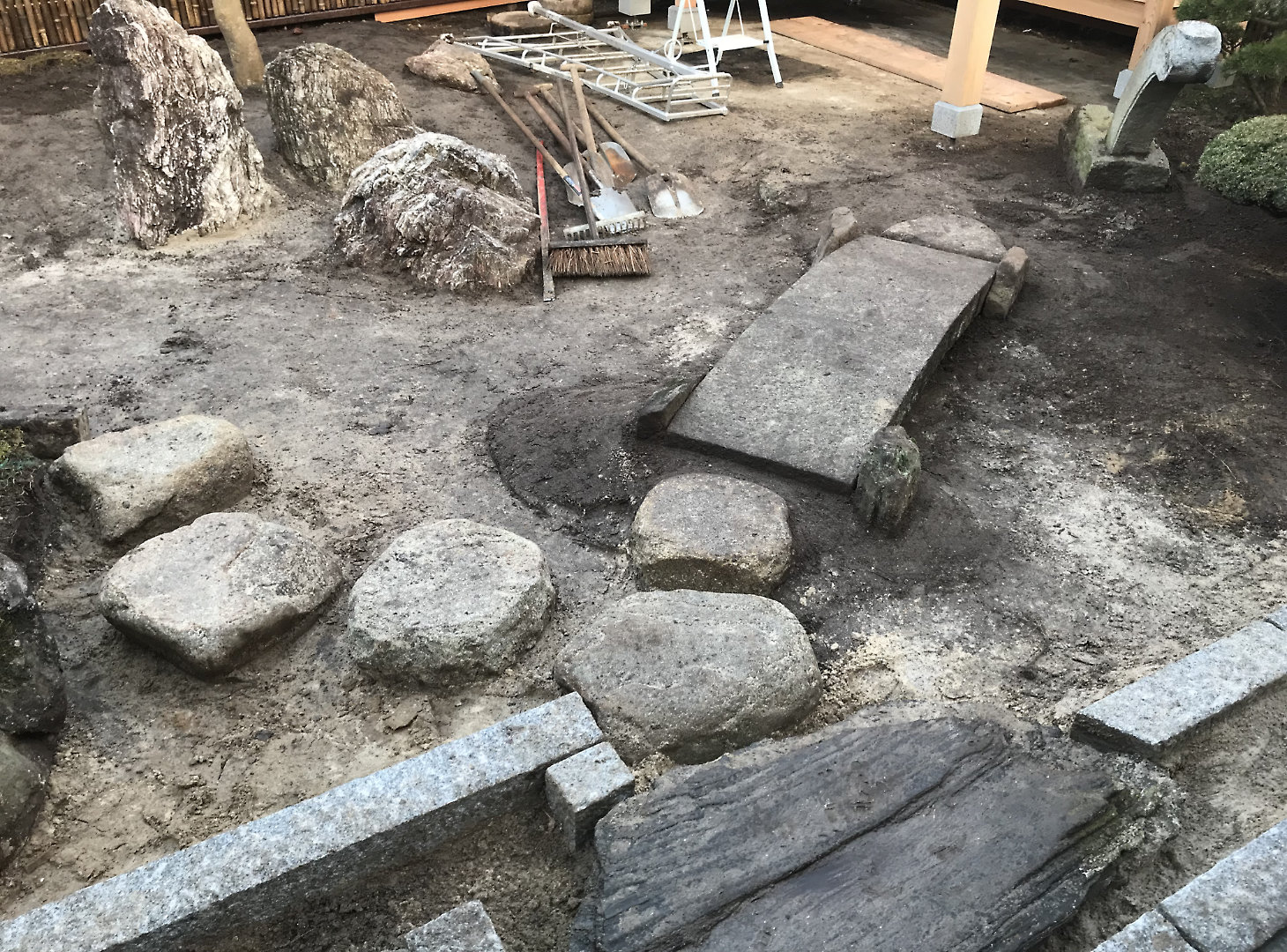
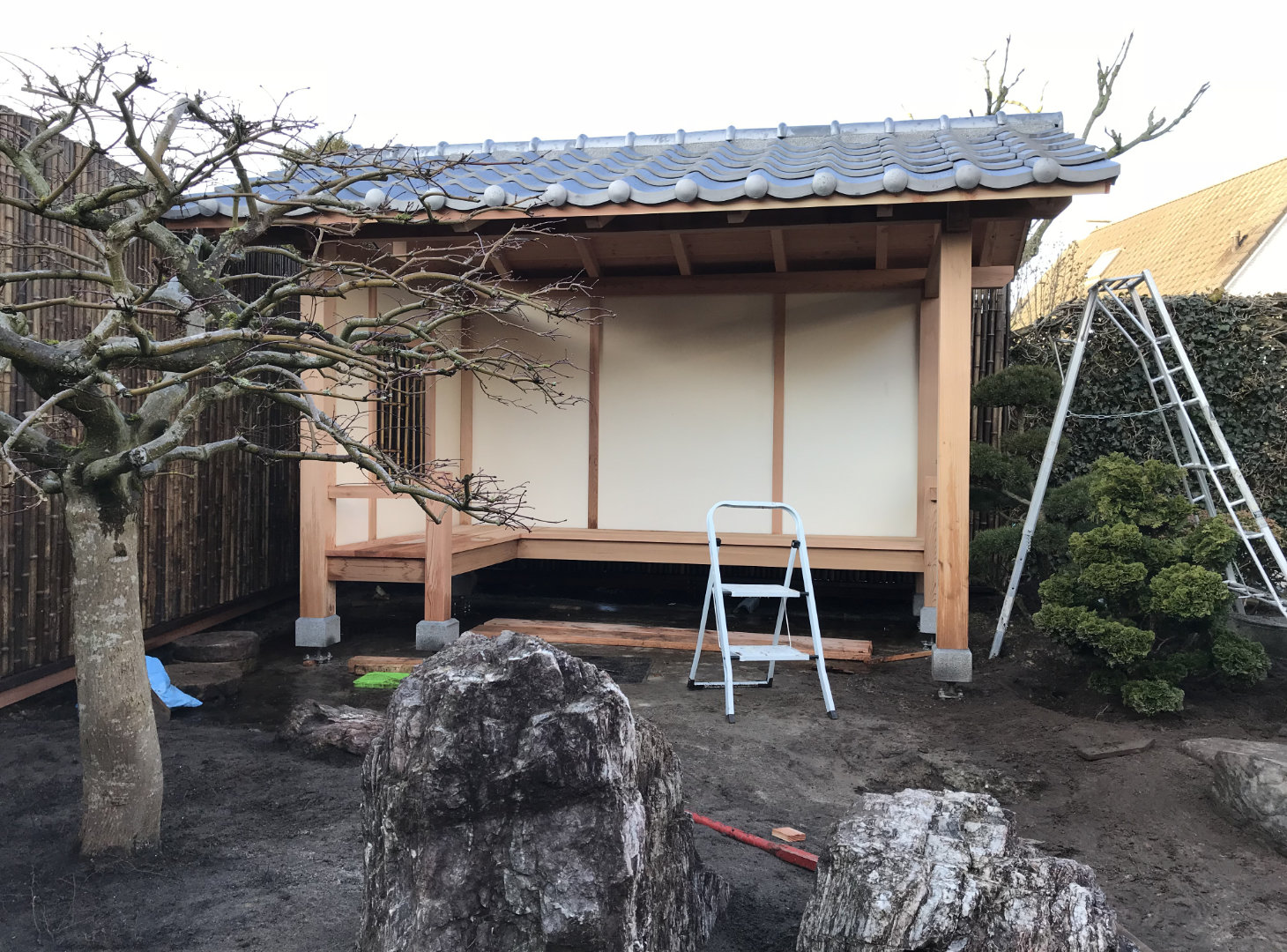
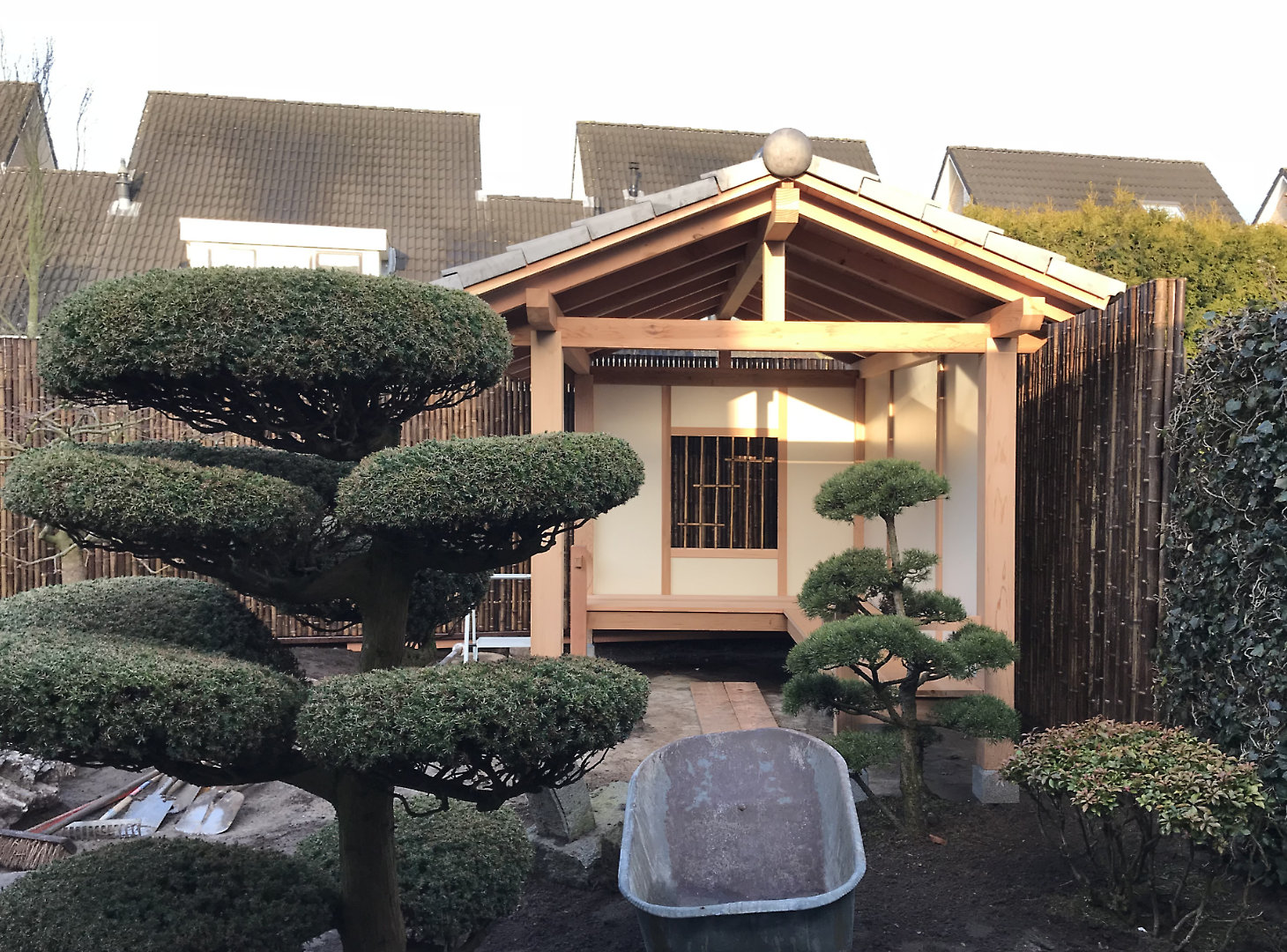

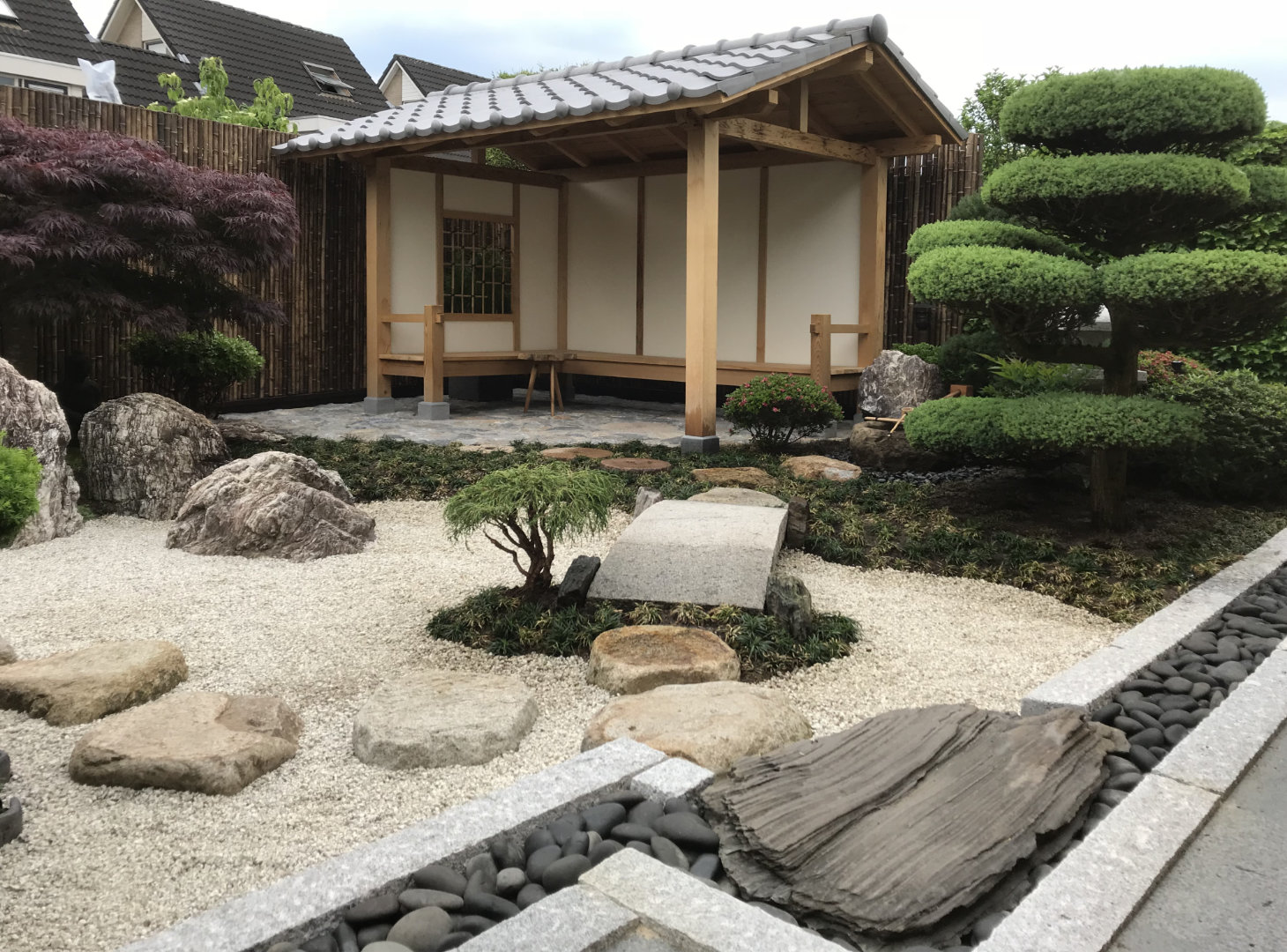
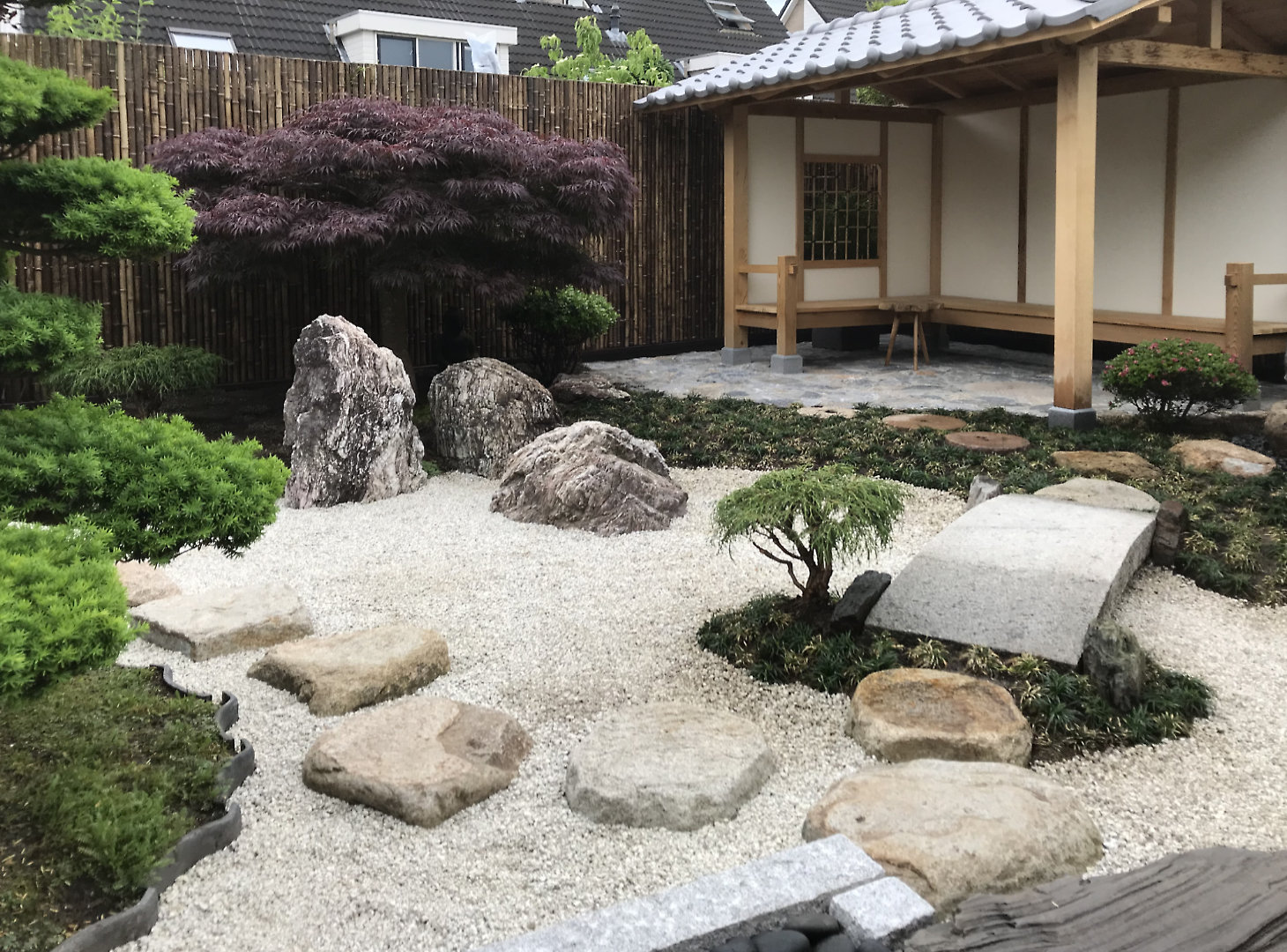
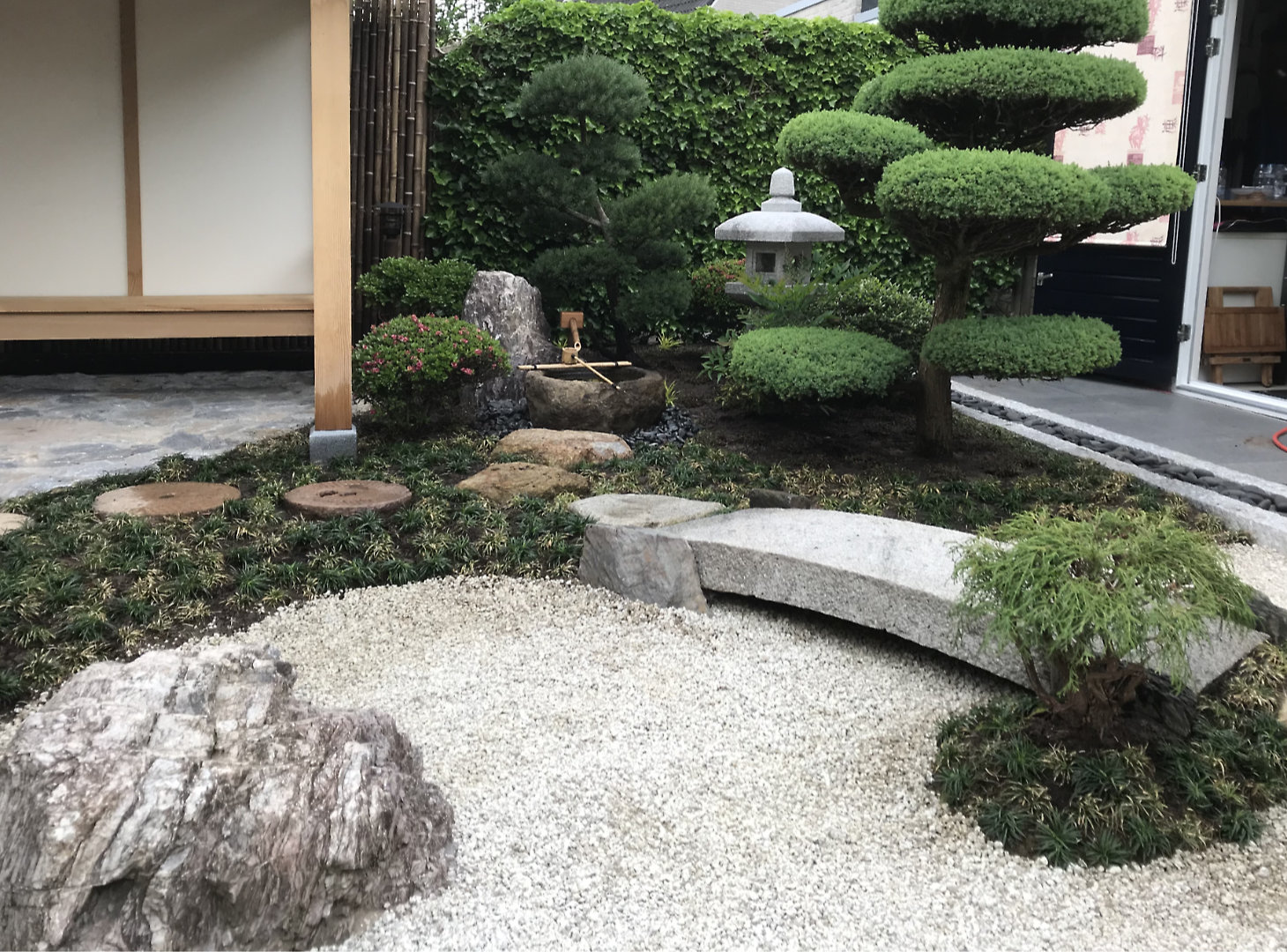
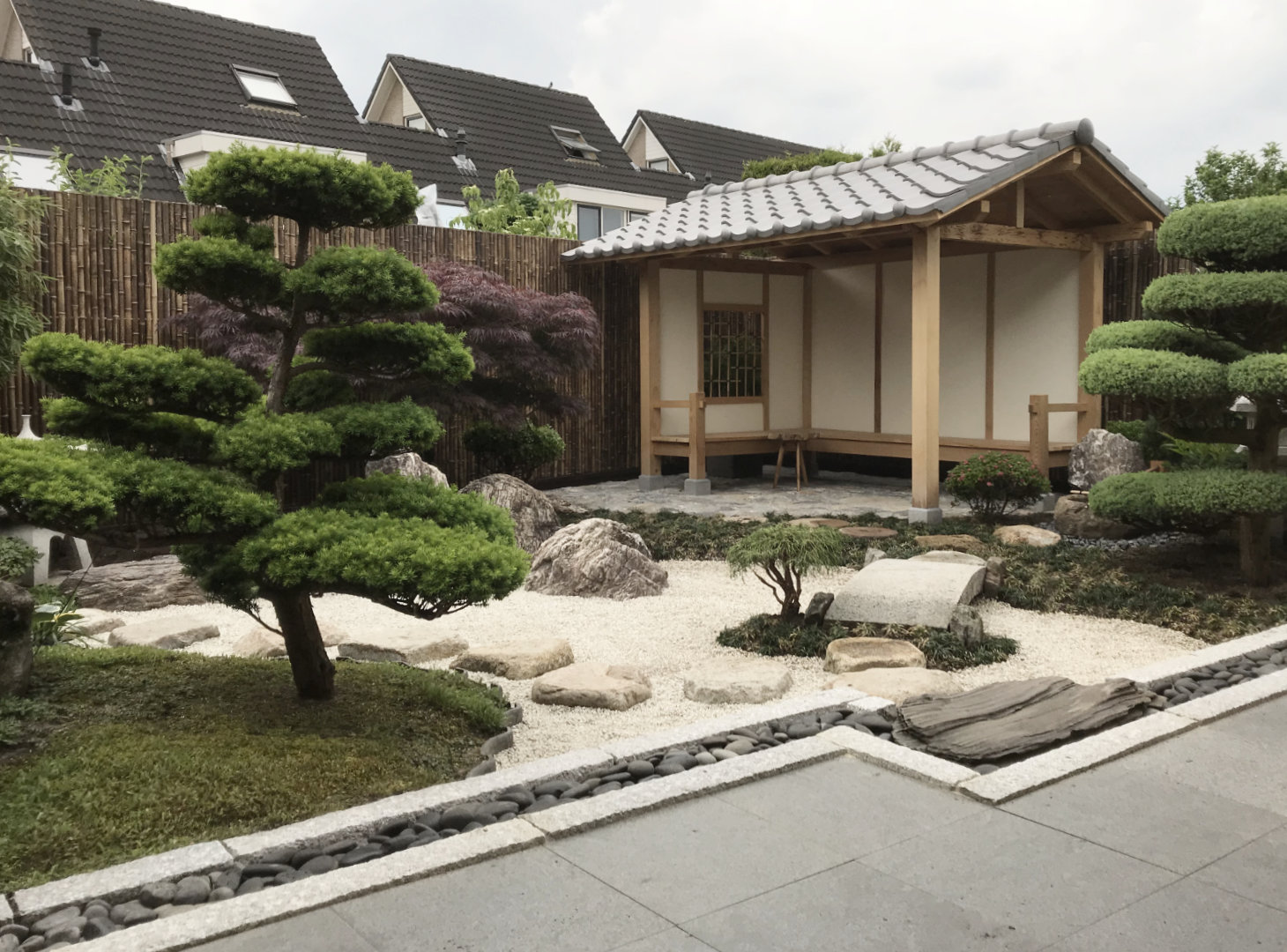









Contact Yokoso Japanese Gardens